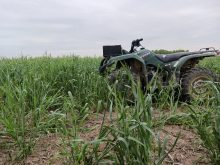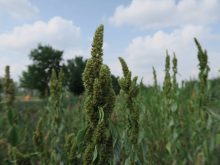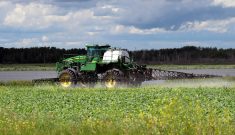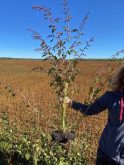Herbicides are incredible weed control tools, but their effectiveness can be significantly degraded by a variety of environmental, human and other factors.
Why it matters: Herbicide resistance continues to be an issue of concern for growers.
Peter Sikkema, now retired professor of plant agriculture at the University of Guelph, Ridgetown, discussed a variety of ways farmers and the environment can hinder herbicide efficacy — and how mistakes can be avoided — while speaking at the 2025 Southwest Agricultural Conference last month.
Read Also
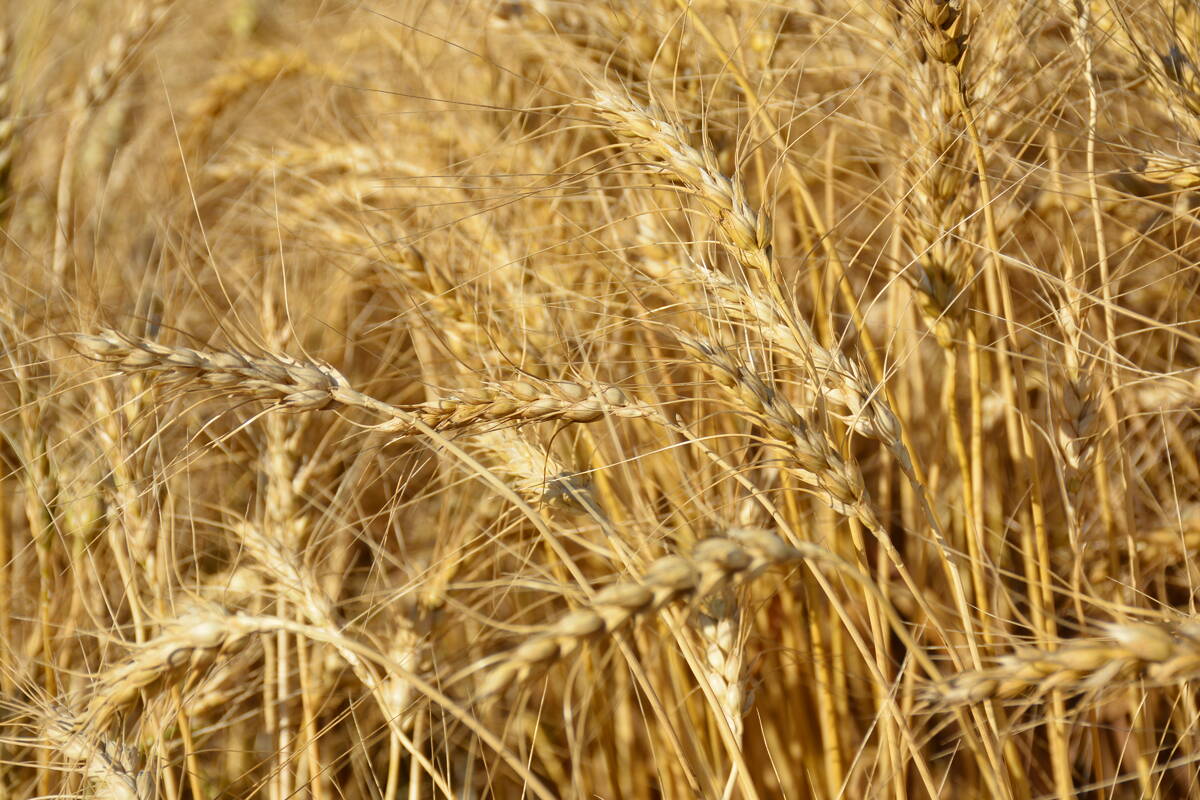
Scientists discover a gene that could triple wheat production
This discovery could give breeders a powerful new tool to boost yields without needing more land, water, or fertilizer.
Sikkema’s overarching message, however, was the importance of realistic expectations in using herbicides to kill weeds.
“Herbicides are incredibly valuable weed management tools. But because they’re impacted by plant physiology, weather and soil characteristics, weed control is variable,” says Sikkema, citing an example where the same herbicide application on two different populations of multiple herbicide-resistant Canada fleabane brought drastically different rates of control.
“Frequently the reason for less than acceptable weed control with herbicides is outside of everybody’s control. However, sometimes it is human error,” says Sikkema.
“I would go on to say I think it’s irresponsible for herbicide manufacturers, ag-retailers and agronomists to guarantee acceptable weed control with herbicides. I also think it’s unreasonable for farmers to expect acceptable weed control with herbicides in every field, every year.”
Moisture and temperature
Soil-applied herbicides requiring moisture for activation will naturally be affected by overly dry or overly wet conditions. Indeed, Sikkema says soil-applied herbicides will almost universally start losing effectiveness, due to both photodegradation and volatilization, after seven to ten days without rain.
Excess moisture will, conversely, pose leaching risks.
How much rain is needed for activation also varies according to soil conditions at the time of application. Sikkema says even a full inch of moisture may not be enough to fully activate herbicides applied to “bone dry” soil. Soil pH itself may pose a risk. Positively charged herbicides that protonate or deprotonate – accept or release a proton – can bind to negatively charged soil, thus becoming unavailable.
It’s also more difficult for post-emergence herbicides to cross the plant cuticle — the protective layer around a plant’s epidermis — when the weather is too hot and dry. Spray droplets also dry quicker, providing a smaller window for the herbicide to be absorbed through the hardened cuticle layer.
Sikkema says reduced weed control is a reality for “almost all post-emergence herbicides under hot, dry conditions, simply because not enough herbicide gets into the living portion of the plant.”
Weed characteristics
Weeds with thicker cuticle layers can further exacerbate the weed control challenge.
Lambsquarters, for example, boasts a comparatively thick cuticle layer. Sikkema says this might be the reason it so often escapes post-emergence herbicide applications. Larger weeds in general have a thicker cuticle than smaller, younger plants, and are also growing at a slower rate. Both factors contribute to less absorption, leading Sikkema to argue farmers should always spray a little early, rather than a little later, if they have to chose.
Regarding weed density, Sikkema says herbicides “always work better in low-density environments than they do in high density environments.”
“Every one of you, as a farmer, you should do everything you can to reduce weed seed return to the soil. It will make weed control easier next year, if you do a good job this year.”
Farmers shouldn’t forget weeds are canny organisms determined to reproduce. While some species emerge early in the growing season, others emerge through the entire growing season. Sikkema says an example of the latter is waterhemp — a weed that can develop seeds in as little as 25 days.
“Plants see the environment and want to have progeny the next year,” he says, reiterating application timing is a balancing act.
How a given weed developed resistance to one or more herbicides matters as well. If resistance comes from amino acid substitution — where the production of key amino acids required for protein production is prevented from occurring — entire herbicide groups and active ingredients can be rendered ineffective.
If resistance is a result of enhanced metabolism — where the weed becomes resistant to the molecular structure of a specific herbicide — the different molecular composition of other products within the same herbicide grouping could still work. Sencor, for example, might work on a weed resistant to Atrazine, if its resistance to the latter came from enhanced metabolism.
Other factors affecting herbicide weed control include:
Carbohydrate translocation: Prior to flowering, broadleaf weeds spend most of their energy supporting reproductive growth. This means less downward translocation of carbohydrates to roots. Herbicide applications made too early will bring reduced control.
Weed species: Sensitivity to herbicides varies between weed species. Five-times as much Roundup is required to kill common ragweed compared to green foxtail, for example. Knowing what weed species are in a given field should change the herbicide rate. Rates should then be adjusted depending on species composition and weed height.
Poor product pairing: Some herbicides antagonize others, reducing overall effectiveness. Classic and First Rate antagonize Assure, for example. Consider applying products separately.
Coverage and adjuvant selection: Take steps to ensure adequate cover, and pick an effective adjuvant. Regarding the latter, Sikkema says he is amazed “how you can make a really average herbicide look exceptional with the right adjuvant.”






